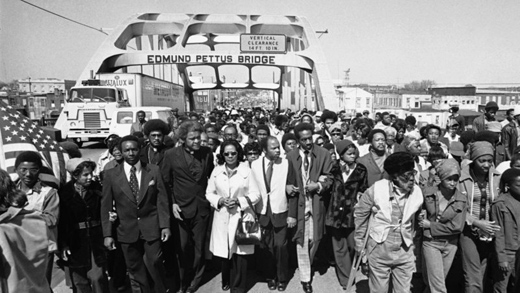
Southern politicians who are denouncing the Confederate battle flag as a legacy of slavery aren’t saying that there also exists a Southern legacy of fighting injustice. They don’t want to encourage the thousands of Southerners who are today organizing against voter suppression laws, the school-to-prison pipeline, police violence, the lack of affordable healthcare, and the attacks on unions. These freedom fighters are the inheritors of a tradition that began with rebellions by people who were enslaved and is just as historic, and just as Southern, as anything represented by the battle flag.
The politicians’ call to haul down the battle flag is welcome, but it’s unrealistic to expect them to take any action that will disturb institutionalized racism and suppression of workers’ rights.
What’s more, many of the politicians calling for the removal of the battle flag aren’t even admitting it is a symbol of repression, but only that it seems to annoy some people; corporations point to opinion polls that show the flag is bad for business. In fact, many opponents of flying the flag agree with those who salute it. It’s not a flag of hate, they say, but stands for a proud tradition of independence and a racially neutral principle of states’ rights.
Dylan Roof misused the battle flag, they say, when he used it in a photograph to announce his intention to murder African Americans. Roof is insane, but his understanding of the battle flag is accurate. It was designed by William Porcher Miles, a plantation owner and member of the Confederacy’s House of Representatives. Miles belonged to what was called the “Fire-Eaters,” a caucus that most Confederate politicians considered overly fanatical.
In its five years of existence, the Confederate States of America (CSA) adopted and then un-adopted three national flags, but Miles’ flag was consistently used in the war against the Union to help secessionist soldiers know in which direction to shoot.
The Confederate army killed to preserve slavery, not for state’s rights or the independence of states. The relationship between the states and the central government in the CSA constitution mirrored the provisions of the Constitution of the United States, with one exception. The Confederate Constitution guaranteed that the federal government “would never pass a law denying or impairing the right of property in negro slaves.”
Perhaps today’s debate over the symbols of slavery will create opportunities for Southerners to learn that selling secession was no easy task. The majority of white people in the South held no one in captivity. Lies and false fear, not ideals, were used to convince them to vote for leaving the Union.
Plantation owners and their politicians and clergy repeated over and over again that if the South stayed in the Union, slaves would be freed, would rise up, pillage, and plunder, and kill every white person in sight. These were lies, of course. Plantation owners wanted war because they wanted to expand slavery. Further, once freed, the main concern of former slaves was making a living, not taking revenge.
Even so, despite the hate-mongering juggernaut, vast portions of the South voted against secession.
Furthermore, as the Civil War wore on, it became increasingly difficult to keep many white Southerners in line. As Bruce Levine shows in The Fall of the House of Dixie: The Civil War and the Social Revolution that Transformed the South, “poor southern whites grew increasingly disillusioned with fighting what they had come to see as the plantation owners’ war; and the slave owners grew ever more desperate as their social order was destroyed, not just by the Union Army, but also from within.”
It’s especially important that through the current re-examination of their heritage, Southerners learn that immediately after the Civil War there were many instances of poor whites and blacks working together for their common interests. It took the combined power of super wealthy Southerners, Northern industrialists and the U.S. government itself to undermine Reconstruction.
Without the power to keep black people in bondage, the sons of the slavocracy had to impose their hegemony through the creation of the Black Codes, the encouragement of lynching and the adoption and strict enforcement of segregation laws. African Americans were locked into the bottom of the social and economic order.
To make certain poor whites would not make common cause with poor black people, the full force of state governments was used to reinforce the myth of white supremacy, and the Confederate flag of war remerged as its omnipresent symbol. It became part of the Mississippi state flag in 1894 and in 1956, in reaction to the Supreme Court’s decision in favor of school desegregation, Georgia made the battle flag part of its state flag. Earlier, in 1948, South Carolina Senator Strom Thurmond used it in his campaign for President as the candidate of the States Rights Democratic Party (the Dixiecrats).
A few weeks ago, Strom’s son Paul, a South Carolina state senator, said that although he loves his ancestors, he isn’t proud of a heritage that includes holding people in bondage. Is he proud of the long Southern tradition of resistance to bondage and the fight for full equality? He didn’t say.
Nevertheless, that tradition exists, and it is a proud tradition.
If Southerners are done with honoring the Confederate battle flag, they could honor Southerners who were enslaved and led revolts. They could honor those who conducted the Underground Railway and fought in a myriad of ways against enslavement. They could pay homage to Southerners who fought against secession and conscription into the Confederate army. They could honor those who organized African Americans and whites together into unions throughout the South.
Men and women who led and participated in the modern fight for equal rights in almost every town and county throughout the South should be given their proper place in Southern history.
The governor of South Carolina is calling for the Confederate battle flag to be removed from in front of the statehouse and put in a museum, where it belongs.
The question is: what will the museum teach about the flag?
The museum could explain it is a remnant of the system that held African American people in bondage, brutalized both whites and blacks, enacted and enforced segregation laws, and kept many Southerners in poverty. It could then teach about the long Southern tradition of resistance to this system.
* Rubin was a civil rights organizer in the Deep South and is a board member of the Student Nonviolent Coordinating Committee Legacy Project.
Photo: The famous march for voting rights in Selma, Alabama was just one of many examples of the Southern tradition of fighting for justice. | Change.org










